At Stouffville SMILES Dentistry, we want our patients to be very comfortable getting the dental treatment that they need. Studies show that dental fear and anxiety (or lack of comfort) is the number one reason people avoid going to a dentist. Financial reasons are a distant second.
There are plenty of relaxation or sedation options available for patients with:
- fear and anxiety
- past traumatic dental experiences
- a strong gag reflex
- Want to get more done in less visits or require long appointments
- complex dental problems and procedures or difficulty getting numb
- hate needles, shots, noise, smell or taste associated with dental care
- medically compromised individuals
- special needs children and adults
What are my Relaxation Options?
- Nitrous Oxide
- Oral Sedation
- IV. Sedation or General Anesthesia (sleep dentistry)
What is the difference between sedation and anesthesia?
Sedation is mere relaxation, where you are awake and able to communicate to varying degrees depending on the level. General anesthesia is a state of complete unconsciousness. Although in clinical and practical terms, a patient can have different states of “sedation” vs. “anesthesia” depending on the medication and the mode used.
What is “nitrous oxide”?
Nitrous Oxide is an extremely safe medical gas commonly referred to as “laughing gas” that is used for treating patients with anxiety associated with treatment and as an agent to medically calm the patient during the procedure. Nitrous oxide is the mildest form of our relaxation options available at our office and delivered through a nose piece and can be combined with others such as oral sedation for an added effect.
What are the Benefits of Nitrous Oxide?
- Very rapid onset and quick recovery so that patients can usually leave the office without an escort.
- Control over the level to find the most comfortable level with almost no risks of over-sedation.
- No medically proven side effects apart from possible nausea and vomiting.
- Mild analgesic or pain control effect, however, local anesthesia is still necessary for complete pain control.
What is “oral sedation”?
Oral sedation is typically a medicine that is given to the patient orally as a tablet or a powdered drink. It can be combined with nitrous oxide for an added effect.
What are the Benefits of Oral Sedation?
- Easy to administer and often provides a deeper level than nitrous oxide.
- Can be combined with nitrous oxide for a deeper level of sedation.
- Possible anterograde amnesia which is loss of memory while you’re sedated. This can be beneficial as it may help with recovery from the procedure itself.
- Recovery is slow and it can take up to a day to fully recover. You MUST be escorted home by somebody and will NOT be allowed to drive or operative heavy machinery or do anything of responsibility. An adult must be present to keep an eye on you at all times during the day.
What is I.V. Sedation vs. General Anesthesia?
This is what we like to call “dentistry asleep“, “sleep dentistry“, “dental anesthesia” or “sleep for dentistry” because you will be truly and a 100% asleep.
Sleep dentistry is achieved by administering various sedatives and anesthesia medications either through the veins (an I.V. line) or by gas through a mask.
I.V. sedation is administered and controlled by an anesthesiologist who is a specialist in this field. It is the highest form of sedation. You’re still conscious but in an extremely relaxed state and will almost always not remember the procedure. General anesthesia or unconscious sedation is also administered and controlled by an anesthesiologist. You will not be conscious anymore and will require slightly more recovery time than I.V. sedation. This is ideal for children as any other form of deep sedation can be unpredictable and unsafe. General anesthesia is the only predictable and safe option available to treat young children and toddlers from the age of 1 to 10 years old safely and conservatively.
Is General Anesthesia safe for my child?
General Anesthesia is considered as one of the safest methods of treating an uncooperative child. Although, it has its own risks as with any medical procedure, the statistics are over 99.5% successful. General Anesthesia is being performed on thousands of children and toddlers every day across the world with almost no failures. Unfortunately, the news and media tends to focus on the failures only which has created a sense of fear among patients. Dr. Novin has been treating uncooperative and medically compromised patient for over 12 months of age using a combination of behavioural techniques and medical sedation and anesthesia as mentioned here.
“As with any medical procedure, we must always carefully assess the risk and the benefit. In my experience, general anesthesia remains a tool that has allowed me to successfully treat hundreds of children that would not the get the needed treatment otherwise.” says Dr. Novin.
Before general anesthesia made its way to dental offices, children that were uncooperative would be strapped down for the dental treatment which created a generation of fearful patients well into their adulthood. Dr. Novin argues that method of treating patients is negligence in the presence of safer methods with sedation. Dr. Novin strongly believes that deep levels of sedation and anesthesia must be carried out by an anesthesiologist specially trained in the field so that the dentist can focus on the dental treatment and the anesthesiologist can focus on the sedation part – as of now, there are yet to be any reports of fatalities when there are two doctors working as a team to deliver dental treatment to children.
Dr. Novin has been working with Dr. Gizzarelli since 2016 and together they have treated hundreds of children and adults who would otherwise never get the treatment they needed. Stouffville Smiles is the only facility that offers single visit sleep dentistry and dentistry asleep services in Stouffville and surrounding cities for all ages.

